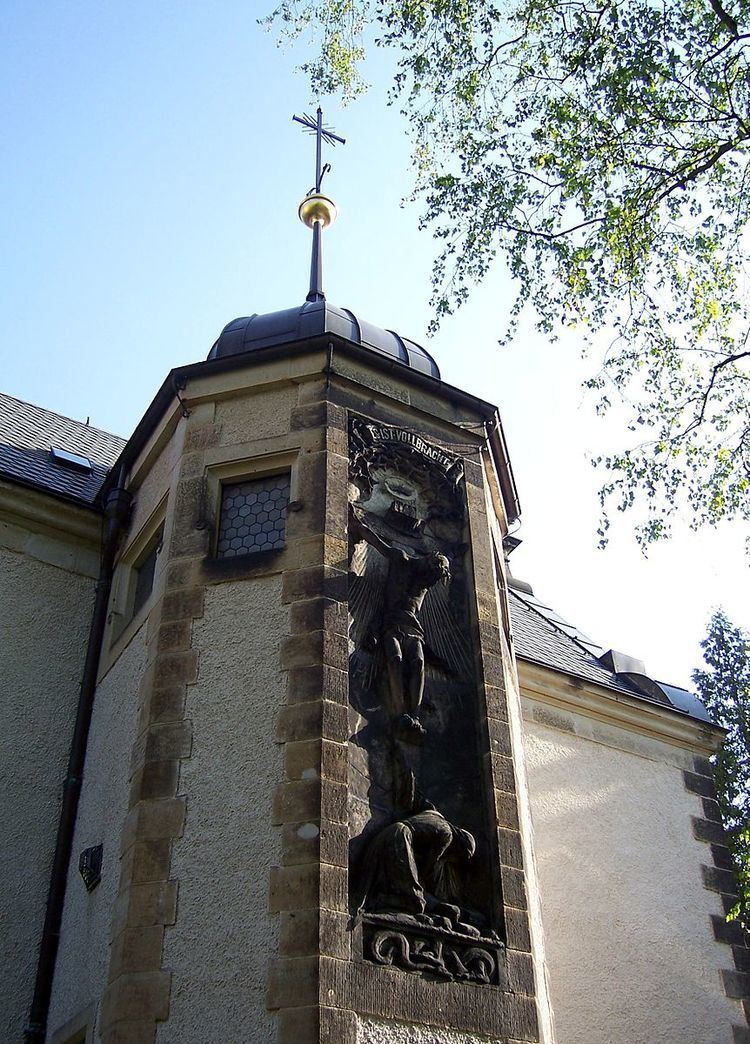 | ||
Loschwitz Cemetery (German: Loschwitzer Friedhof) is the second burial ground, still in use, of Loschwitz, part of the city of Dresden, Germany, replacing the graveyard of Loschwitz church, no longer used for burials. The cemetery was dedicated in about 1800. Because of the many artists buried here and the many artistically valuable funerary sculptures it is a protected monument.
Contents
History
In about 1800 the churchyard of Loschwitz became full, and so a new burial ground was opened on the road to Pillnitz, the present cemetery. It is laid out as a meadow. Over the years it has been enlarged several times in the direction of the old village centre of Loschwitz. It consists today of an old part and a new part, opened in 1918, and a place for urn burials, completed in 1927.
In 1893 a chapel was added, by the architect Friedrich Reuter. The stained glass windows are by Wilhelm Walther, the creator of the Dresden "Fürstenzug"; the scene of the Crucifixion over the centre portal is by the sculptor Johannes Hartmann from Leipzig. The chapel bell with an inscription "Frieden" ("Peace") was made in 1947 by Friedrich Wilhelm Schilling from Apolda. During the flooding of the Elbe in 2002 the cemetery was under water, which damaged the many trees and plants. The damage was made good by volunteers.
Graves
Loschwitz Cemetery is the burial place of numerous artists of regional and national significance, who also created many of the gravestones and monuments. Many of them lived, at least for a time, in the Loschwitz Artists' House, which stands directly opposite the cemetery. More than 60 of the graves are counted as being of special artistic significance, including the following:
Other artistically valuable graves are those of Wilhelm Lachnit and Hans Unger. The imposing monumental sculpture "Tod mit Bombe" ("Death with Bomb"), designed by Friedrich Press in 1945 for the watchmaker Paul Pleißner, shows Death carrying a bomb and a scythe. Pleißner lost his business in the air raids on Dresden, and the monument is also seen today as a memorial to the victims of the Dresden bombing.
Others buried in the cemetery include:
There are also two war memorials. The one commemorating the dead of World War I was dedicated in 1923. Since 1956 three wooden crosses to a design by Oskar Menzel have commemorated the dead of World War II.
